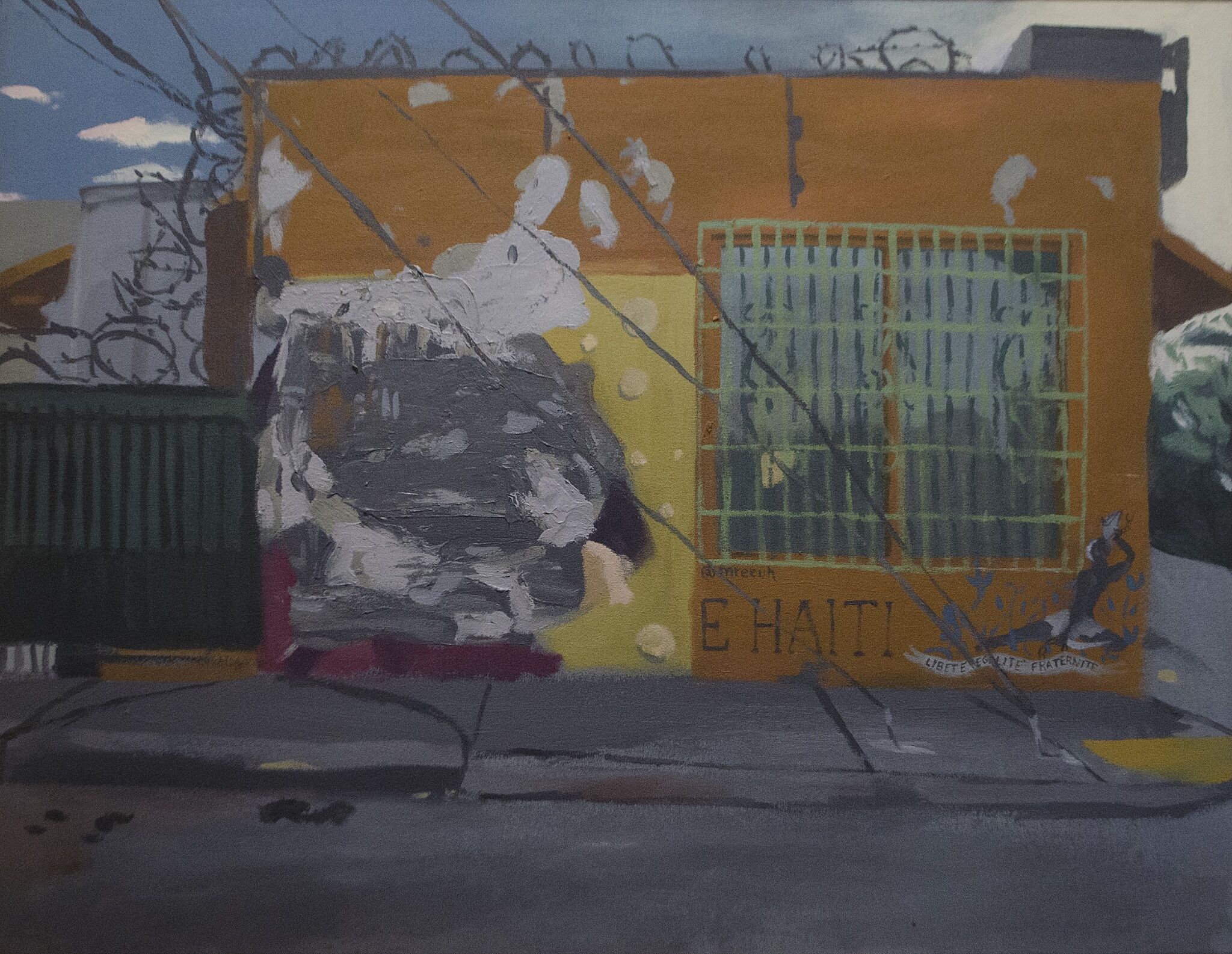Whitney Biennial 2019 | Art & Artists
May 17–Oct 27, 2019
Whitney Biennial 2019 | Art & Artists
Eddie Arroyo
1
Floor 6
Born 1976 in Miami, FL
Lives in Miami, FL
Eddie Arroyo’s urban landscape paintings focus on Miami’s Little Haiti, where he lives and works. The artist’s style recalls historical European landscapes as well as scenes by American artists such as Edward Hopper, but his subject matter—the gentrification of a primarily Black and Latinx neighborhood—is contemporary.
Arroyo painted the four panels featured in the Biennial over an extended period of time, depicting the same site as it appeared from 2016 to 2019. Their focus is a building that until recently housed the Cafe Creole—one of many businesses in the area bearing a mural by Serge Toussaint, a local artist and professional sign painter known for his portrayals of Little Haiti. The narrative that unfolds in Arroyo’s work chronicles the erasure of a community by real estate development—a force that he resists through the very act of making these paintings, as he works alongside local activists fighting to change the current trajectory of the neighborhood.
5825 NE 2nd Ave., Miami, FL 33137, 2017
-
0:00
Eddie Arroyo
0:00
Eddie Arroyo: I'm Eddie Arroyo. I'm an artist, I do a series of paintings of the Little Haiti area mostly.
Little Haiti is located in Miami. I live over there right now, I've been there for about five years and I've been witnessing this transformation.
Narrator: In these three paintings, Arroyo depicted the same building over the course of three years. In 2016, it was home to a restaurant called Café Creole, which broadcast its name with a colorful mural.
Eddie Arroyo: In 2017, it seems that the business had been evicted, or maybe it was just not working for a reason. However, I'm suspicious about a business such as Café Creole not being successful in Little Haiti.
The second one and the third one, the mural has been subsequently erased. And I came to find out that it's the owner that decided to do that. It wasn't an impulse from the people in the neighborhood.
Café Creole, the 2016 version of that particular structure, is a mural painted by Serge Toussaint. He's a sign painter. For a number of years he has made it a personal objective to capture Little Haiti and have it represented through the murals.
A lot of developers were not on board with it as opposed to the local businesses, so a number of his murals that initially were about “welcome to Little Haiti” were painted over white. Subsequently, gone under erasure and basically whitewashed, as far as I'm concerned. It reflects the tension of local developers seeing the potential of prosperity alongside Little Haiti and the identity of the neighborhood.
Of course, as an artist this is my interpretation of what's happening. But I think that particular triptych is a good indicator of how this is unfolding, as we move forward in this late stage of urban redevelopment.
For me, it's just a question of ownership and the decisions being made, and who has a stake and a voice, and what the future of a neighborhood or a place, an identity, is going to be.

